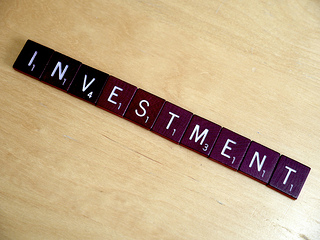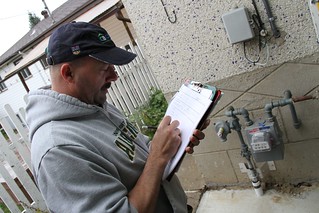Energy savings opportunities can be difficult to implement at times because of the perceived financial impacts they may have on a project. All too often a short-sighted view is taken with regard to a marginal increase in project cost vs. the long term cost reduction impacts that marginal cost will achieve.
In Brent Weigel’s recent blog post, “Life Cycle Costing for Building Investments,” he describes the merits of Life Cycle Cost analyses rather than the limiting “Simple Payback” analysis approach. I would like to propose to owners, construction managers and engineers a simple, yet often overlooked tactic towards championing energy efficiency measures.
Life Cycle Cost Analysis (LCA) is the “correct” way to measure the real cost of a measure. It provides for the lowest cost approach over the lifetime of the measure. LCA is typically most useful for complex or multi-faceted options such as VAV air distribution vs. a fan coil approach. When more straightforward options are presented, ones that don’t necessarily warrant an LCA, we should present the cost-benefit as a return on investment or ROI and not a simple payback.
“If it’s not a 3-year payback I’m not interested”
Ever hear that one before? Maybe it was two years, maybe four, but if you’re in the position of evaluating or implementing efficiency measures, I bet you have. Every project is different and each has its own constraints when it comes to finances. The developers for a new spec office building will probably stick to a very short payback period because they will either sell the building or want to leverage its equity in the next three to five years. Unless they can recoup any additional cost via a higher selling price, a measure must pay back before the building is sold.
But in the case of owner occupied buildings such as hospitals, universities, public school districts, or affordable multifamily housing, the owner of the project is in it for the long haul. They have a vested interest in the long term costs to operate and maintain their facilities. Often, we hear the “payback phrase” from folks in this group of building owners / operators. While I can’t say where they get the number of years from, I can say that I am very often surprised at how short a payback period is expected. Let’s take a university project as an example. ABC College is building a new academic building and they’ve allocated $20 million for the project. Some guy like me joins the team and says, “Hey, if we look at this equipment and that type of system, and modify the controls this way, you can save energy.” ABC’s project manager says, “Great, what will it cost and how much will it save?” How the information is presented to answer that question can make or break the decision to implement efficiency.
The project manager’s question could cause us to answer “120,000 kWh of electricity and 4,000 CCF of natural gas.” The construction manager looks at the suggested changes and says, “That’s a $68,000 add to the budget.” That is likely a non-starter even though it’s a 0.34% cost increase to the project. We then regroup and note that the operating cost savings are worth about $17,000 per year. The project manager takes out his trusty i-Gadget and figures it’s a four year simple payback (you don’t even need an app for that). “Four years it too long,” he says. Very often, that’s where the conversation ends. How can we present that information differently to get a positive result?
Speaking the Same Language
Some of us geeks like to know how many kWh, kW and CCF or gallons of fuel oil we can save. Most folks don’t! Most folks are looking at dollars and I can’t blame them. Dollars are the tangible thing we give to others for their time and products. Sticking with ABC College for a minute, I would propose to the project manager that rather than looking at a $68,000 adder, consider the long term financial implications. We often use a simple payback method as a metric to define the value of an efficiency measure. This is flawed. While a four year payback might seem a little too long, consider it this way:
Take that $68,000 and invest it in the stock market for four years instead of increasing the efficiency of your building. Let’s assume you get a healthy 10% return and it reinvests and compounds annually. At the end of four years you’ll have slightly less than $100,000 for a gain of about $32,000 or a return on investment (ROI) of 47%. Hey, not bad at all! Let’s use that same method to look at the value of the operational savings based on efficiency. You save $17,000 per year, and at the end of four years you've saved $68,000[1]. Over the same four year period that’s an ROI of 100%, more than double the ROI you got on that healthy 10% return. Or to put it a different way: you could invest the $68,000 in the stock market and at the end of four years you will have earned $32,000; or you could invest $68,000 into your building and at the end of four years it will have earned $68,000. The efficiency measure now becomes a very hard opportunity NOT to take.
Lastly, it is typically the case that the cost of an efficiency opportunity will often be partially offset by an incentive from the utility company. We’ve seen our local electric utility support measures with as much as a 50% first cost incentive, which significantly impacts the positive financial benefits of the efficiency measure.
Going Forward
We have to accept that some construction projects are simply hamstrung by unrealistic budgets or unwilling owners. In my experience, however, there is some wiggle room especially when a compelling case can be made from a solid, financial standpoint that efficiency measures are the best investment. We energy geeks have a responsibility to learn the financial jargon and the processes by which the decision makers make financial decisions. We cannot rely on the merits of efficiency measures to ensure their implementation. We’ve got to make sound engineering decisions to increase building efficiency that can be supported by simple, meaningful financial analyses so the folks making the decisions can weigh the benefits of energy efficiency against other investment opportunities.






